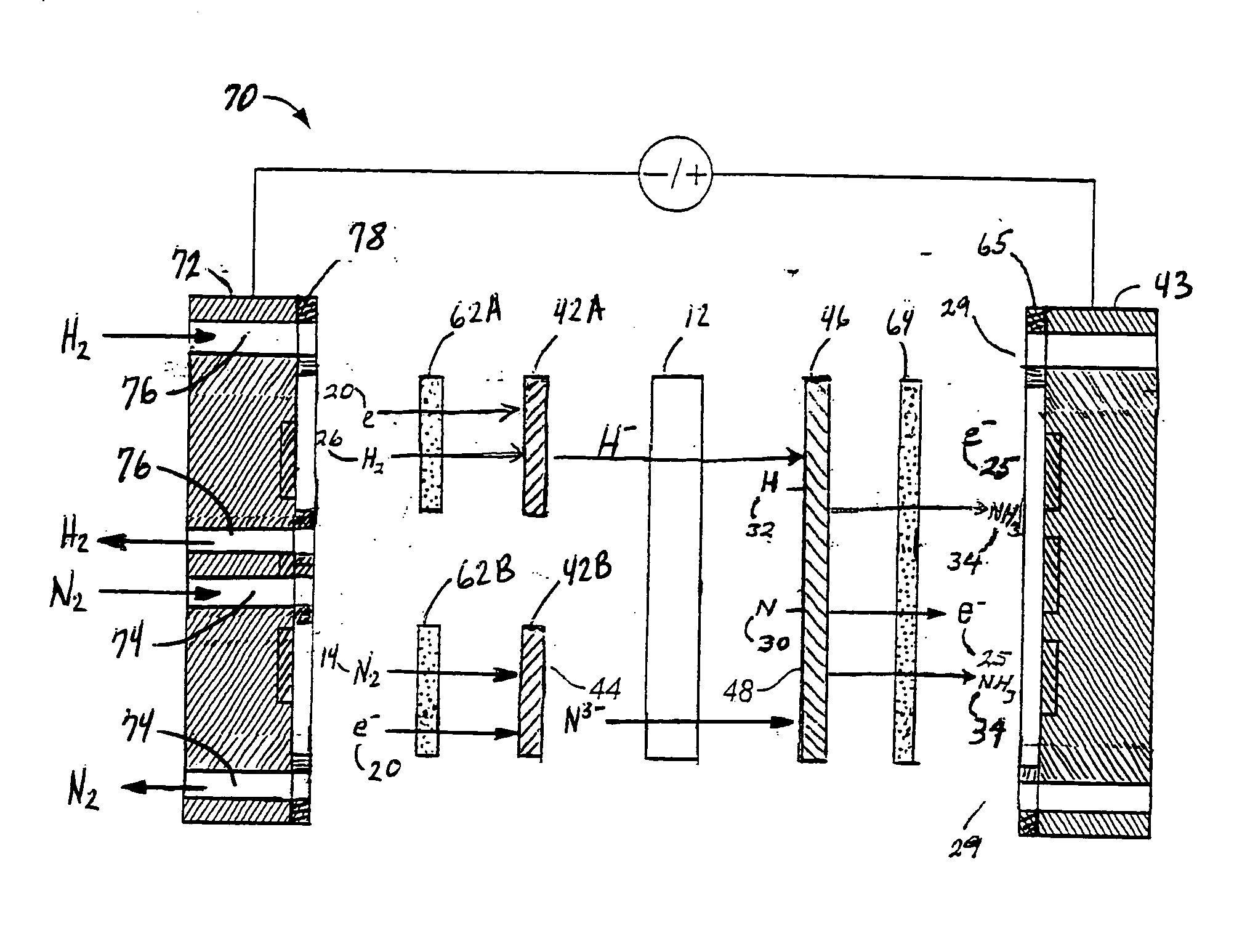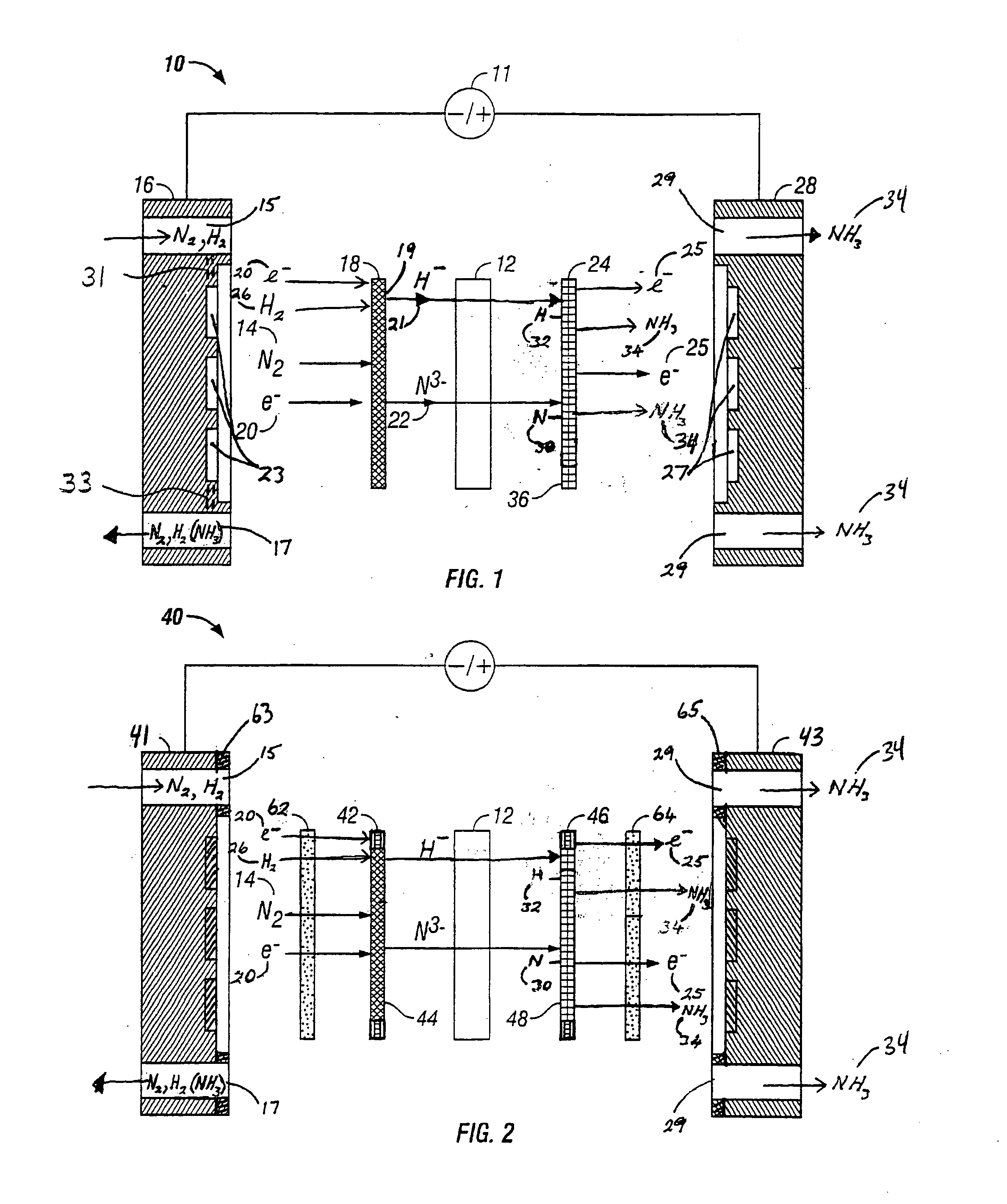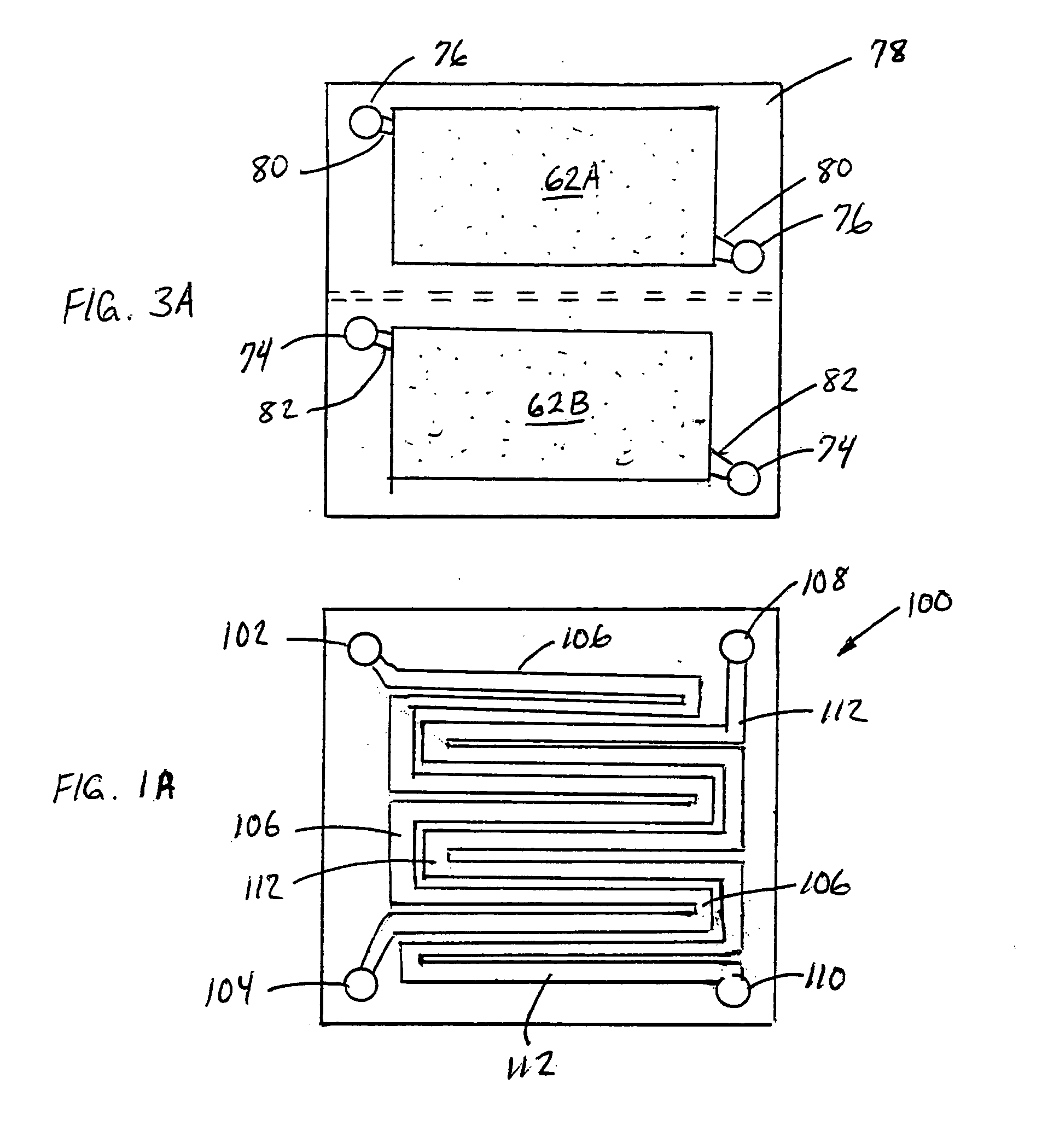Electrochemical synthesis of ammonia
a technology of ammonia and electrochemical synthesis, which is applied in the direction of electrolysis process, electrolysis components, etc., can solve the problems of increasing the thermal decomposition rate of ammonia, slow electrochemical reaction rate, and large-scale chemical plants and costly operating conditions, so as to prevent leakage
- Summary
- Abstract
- Description
- Claims
- Application Information
AI Technical Summary
Benefits of technology
Problems solved by technology
Method used
Image
Examples
second embodiment
[0067]FIG. 2 is an expanded schematic flow diagram of an ammonia electrosynthesis cell 40 in accordance with the present invention. The cell 40 operates in almost identical fashion to cell 10 of FIG. 1, except that it includes a catalyzed gas diffusion electrode or a catalyzed backing electrode 42 in combination with a porous electrically conducting cathode flow field 62 and a catalyzed gas diffusion electrode or a catalyzed backing electrode 46 in combination with a porous electrically conducting anode flow field 64. A cathode flow field frame 63 encompasses the perimeter of the cathode flow field 62 and makes a leak free seal with the endplate 41. A similar frame (not shown) surrounds the cathode electrode 42 / electrolyte-matrix combination 12 / anode electrode 46 assembly. The cathode gas manifolds 15 and 17 in cathode endplate 41 are in fluid communication with the cathode flow field 62. Similarly, an anode flow field frame 65 encompasses the perimeter of the anode flow field 64 an...
third embodiment
[0068]FIG. 3 is an expanded schematic flow diagram of an ammonia electrosynthesis cell 70 in accordance with the invention. The cell 70 has an cathodic endplate 72 with nitrogen gas inlet / outlet manifolds 74 that are separate from the hydrogen gas inlet / outlet manifolds 76. Furthermore, the hydrogen and nitrogen manifolds 76,74 communicate the gases to separate flow fields 62A, 62B, respectively, and, in turn, to separate electrode substrates 42A,42B, respectively. As discussed previously with respect to FIG. 1A, it may be beneficial to maintain some separation of the reactant gases to avoid ammonia generation at the cathode. Thise endplate 72 illustrates an alternative configuration to maintain that separation, but also facilitates the use of the separate flow fields and electrode substrates. In this manner, the overall cathode surface area is effectively split to provide a hydrogen cathode and a nitrogen cathode. Having the separate hydrogen cathode substrate 42A and nitrogen cath...
fourth embodiment
[0071]FIG. 4 is an expanded schematic flow diagram of another ammonia electrosynthesis cell 90 in accordance with the invention, the cell 90 having two half cathodes enplates 92,94 coupled to separate power supplies 96,98, respectively. Two half cathodes are formed by the combinations of the endplates 92,94, the flowfields 62A,62B, and the electrode substrates 42A,42B, respectively. While cell 90 have many similarities with cell 70, the endplates 92,94 are electrically isolated by an insulative flowfield frame 78 can be made in the same manner as in FIG. 3, preferably with the insulator element 99 being an insulative material to provide support for the adjacent central portion of the frame 78. An electronically insulative frame would also be placed around the cathode substrates 42A,42B (not shown) to maintain electrical isolation of the two cathode substrates. Accordingly, the electronic potential or voltage of the two half cathodes can be separately controlled to further optimize t...
PUM
| Property | Measurement | Unit |
|---|---|---|
| temperature | aaaaa | aaaaa |
| temperature | aaaaa | aaaaa |
| pressure | aaaaa | aaaaa |
Abstract
Description
Claims
Application Information
 Login to View More
Login to View More - R&D
- Intellectual Property
- Life Sciences
- Materials
- Tech Scout
- Unparalleled Data Quality
- Higher Quality Content
- 60% Fewer Hallucinations
Browse by: Latest US Patents, China's latest patents, Technical Efficacy Thesaurus, Application Domain, Technology Topic, Popular Technical Reports.
© 2025 PatSnap. All rights reserved.Legal|Privacy policy|Modern Slavery Act Transparency Statement|Sitemap|About US| Contact US: help@patsnap.com



